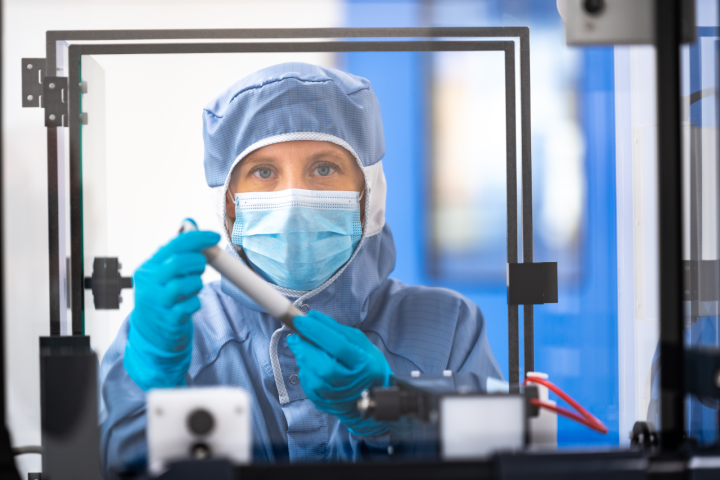Your trusted partner for development and manufacturing of electrospun medical products
Welcome to VIVOLTA’s electrospinning FAQ. As the innovators behind MediSpin™—the world’s first fully automated, GMP-ready electrospinning platform for medical devices—we turn visionary nanofiber concepts into market-cleared products at commercial scale.
Electrospinning creates ultrafine fibers that mirror native extracellular matrices, yet traditional lab setups struggle with throughput, reproducibility and data traceability. VIVOLTA overcomes these hurdles by governing every critical-to-quality parameter. Our climate-sealed chambers hold ±0.5 °C and ±1 % relative humidity, keeping fiber-diameter deviation below 5 % year-round. Faraday-shielded multi-needle arrays lift output up to 100-times over single-needle rigs, while in-line optical metrology self-corrects fiber thickness in real time to guarantee uniformity. This precision manufacturing validates electrospinning for stringent applications such as implantable meshes, drug-eluting stents and regenerative tissue scaffolds.
MediSpin’s wafer-based collection minimizes scrap and accepts both flat meshes and tubular constructs, powering everything from drug-eluting wound dressings to small-diameter vascular grafts without retooling. Each batch exits the chamber with a digital identifier that streamlines FDA or CE submissions and secures end-to-end traceability. ISO 13485-certified cleanrooms and seven patent families safeguard patient safety and your intellectual property, giving you a decisive head-start when launching breakthrough nanofiber devices.
Headquartered in Eindhoven, the Netherlands, VIVOLTA supports innovators across the United States, Europe, Asia and everywhere in between with contract development, pilot production, and manufacturing services. We also supply climate-controlled R&D electrospinning equipment to leading academic research institutes around the world.
On this page you’ll find straightforward answers about electrospinning science, our services, quality framework, material choices and scale-up pathway. Whether you are investigating nanofiber technology for controlled drug-delivery membranes, bioresorbable tissue scaffolds or high-performance filtration media, these FAQs distil the essentials so you can proceed with confidence.
If your query extends beyond the topics below—green-solvent development, AI-driven process optimization or pilot-to-production transfer—please contact us. Our engineers, material scientists and regulatory experts stand ready to help you unlock the full potential of electrospun nanofibers for faster, safer and more effective medical solutions.



